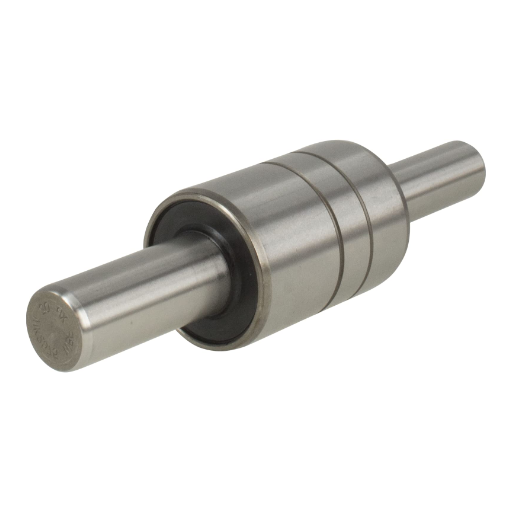Water pump shaft bearing failures can lead to significant system inefficiencies, reduced operational capacity, and costly downtime in industrial, automotive, or residential applications. The primary function of these bearings is to support the water pump shaft, ensuring smooth rotation and minimizing friction under varying loads and speeds. However, due to the demanding operating conditions, these components are prone to wear, damage, and eventual failure. This guide aims to provide a comprehensive framework for identifying, diagnosing, and resolving common issues associated with water pump shaft bearings.
What are the signs of a failing water pump shaft bearing?
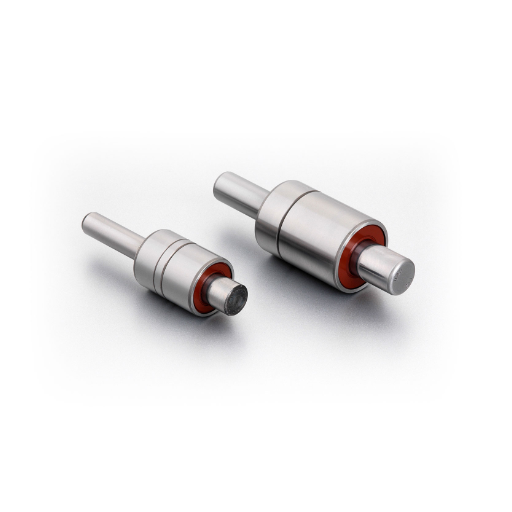
Unusual noises from the engine compartment
The unusual sounds from the engine compartment such as whining, squealing, or grinding, are typically indicative of water pump shaft bearing failure. These noises are generated due to overheating caused by excessive friction or misalignment within the bearing assembly, impeding the rotation of the shaft. Based on my experience, these issues typically arise because of a loss of lubrication, contamination of the bearing, or wear in the rolling elements.
- Noise Level: abnormal bearing noise in decibels is greater than the regular operational range of 80 dB.
- Vibration Amplitude: greater than 1.5 mm/s RHMS is indicative of bearing issues. Normally elevated vibration levels outpace the average of 1.5 mm/s.
- Rotational Speed and load tolerances: surpassing the radian per minute or axial load set limits can harm the bearing causing it to fail faster than normal.
Prompt diagnostic and maintenance help reduce the limits of more harmful mechanical damage.
Coolant leaks and overheating issues
The coolant gets leaked, usually indicating shaft bearing on the water pump has gone bad and this damage could also be caused by the wearing out of the bearing seals. When a seal is broken or compromised, it allows coolant to escape which drops the coolant levels and results in an overheated engine. An overheating engine does not allow the water pump to circulate the coolant properly through the engine which is possible due to excessive wearing of water pump bearing.
- Coolant Pressure: Moisture is maintained at the optimal coolant pressure within the range of 13 to 16 psi. A leak may bring a pressure drop.
- Operating Temperature Of Engine Coolant: Coolant temperature is radio and should be maintained in the range approximately between 195°F to 220°F or 90°C to 105°C. If this threshold is crossed, overheating due to low circulation is a clear indicator.
- Seal Integrity: Signs of wear like cracks or coolant around the outweeping hole of the pump may indicate seal or bearing failure.
Closer monitoring of the technical requirements of the engine in combination with these symptoms could prove to be critical in preventing more damage on top of the existing overheating or coolant leakage.
How do I diagnose problems with my water pump bearing?
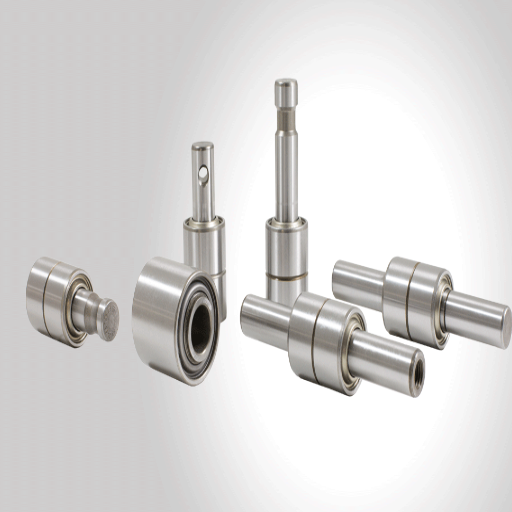
Visual inspection for leaks and damage
To diagnose problems with my water pump bearing through visual inspection, I start by carefully checking for any signs of coolant leakage, particularly around the weep hole or the shaft seal. Coolant residue in these areas can indicate a seal failure or wear on the bearing. Additionally, I inspect the pump housing for visible cracks or surface damage, as these can compromise the integrity of the water pump.
If the bearing wobbles significantly when the pulley is rotated with minimum effort, it indicates that there is a misalignment of the bearing or wear and tear. I also check that no unusual sounds like grinding and squealing, preliminary signs of internal damage, are present.
- Bearing Movement While Spinning: Normal pulley movement causes bearing play of less than 0.02 inches. Excessive movement while turning indicates bearing failure.
- Coolant Leakage During Operation: Most systems start leaking when the coolant pressure ranges over 15 PSI, which is standard in many systems.
- Unusual Sounds Issued During Operation: Any unusual sound issued over the 70 dB threshold is of concern and might be caused by damage to the bearing or seals.
With these observations alongside the technical requirements of the engine coolant system, I can readily locate the problems associated with the water pump bearing.
Listening for bearing-related noises
Noises that emanate from bearings are often due to the wear of the components that leads to malfunction which, if uncorrected, culminates in failure of the entire system. To pinpoint the source of these noises, professionals often employ measures such as operating the system at determined speeds, and varying them as well as using a mechanic’s stethoscope or electronic sound detector.
- Sound Frequency Range: Inaudible degradation of bearings normally results in noise between a lower limit of 100 Hz and an upper limit of 5000 H as ranged by the type of bearing and its speed.
- Vibration Analysis: Any vibration above 5 mm/s RMS is severe and can warn the user of a damaged bearing that needs replacement.
- Temperature Thresholds: Overheating above 212°F (100°C) at the local area of the bearing can lead to overheating at some point indicating high temperature and severe damage which needs immediate attention.
These practices ensure accurate identification and mitigation of bearing-related issues for prolonged system reliability.
What causes water pump shaft bearing failure?
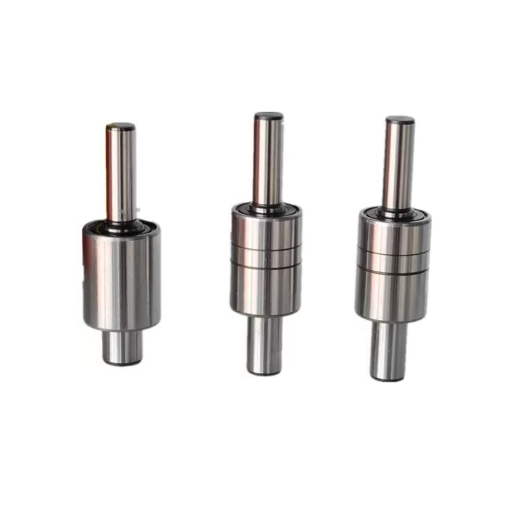
Normal wear and tear over time
Ordinary usage of water pump bearing is attributed to the bearing’s material limit under normal operating temperature and load. During long periods of use, the rolling elements and races of the bearing are gradually worn due to frictional contact. This causes loss of material in dimples or likewise forms and results in decreased efficiency and shortened life of the bearing.
- Operating Temperature Range: Bearings can operate in temperatures ranging from -20° to 250°F (-29° to 121°C). However, constant exposure near the maximum limit may increase wear & tear on the material.
- Load Conditions: Bearings are capable of withstanding certain amounts for both radial and axial loads. It is not advisable to go above these design limits which are usually measured in pounds-force (lb) or Newtons (N), as it leads to material fatigue.
- Lubrication Performance: Effective lubrication diminishes friction and heat. The effect of viscosity should not be less than 10 cSt and not more than 100 cSt at working temperatures.
- Rotation Speed (RPM): There is a rated speed at which the bearing can be rotated and if this is surpassed, the chances of increased wear and breakdown are heightened.
By adhering to manufacturer recommendations and monitoring the above factors routinely, the longevity and reliability of water pump shaft bearings can be optimized while mitigating risks of premature failure.
Contamination from coolant or debris
Water pumps can be damaged from coolant contamination which can destroy the water pump’s performance and it’s functionality. Common contaminants include coolant mix, metallic debris, and other particulate matter. These end up compromising seal integrity and fluid dynamics which puts undue stress on internal components.
- Coolant Specification: Ensure the coolant complies with manufacturer-recommended standards (e.g., ASTM D3306 for antifreeze/coolant) to prevent chemical incompatibility and corrosion.
- Level of Coolant Acid: For smooth functioning and corrosion resistance, it is crucial to maintain ph levels between 7.5 and 11.
- Limits to Debris size: Particulate matter is the fragments of organic and inorganic matter that need to be filtered out below a width of a hundred microns so that the bearings and impellers do not get damaged or destroyed.
- Seal Leakage measurements: Keep check and leak seals with other measures to maintain the barriers of the (<15 mL/hr) of values as a standard precaution against contamination.
And with this, it should be achievable to control all complications related to contamination and ensure that the water pump performs well mechanically.
Improper installation or maintenance
When a water pump system is either incorrectly installed or poorly serviced, it can suffer considerable efficiency losses, safety challenges, and system failure. For instance, unaligned shafts will vibrate excessively and result in unacceptably high bearing and seal wear. Shims should set the tolerances for alignment control at alignment values greater than +0.05 mm. Besides, no regular lubrication of the moving parts will cause friction and high temperatures to develop. Thus, limits must be set to the lubrication schedules and types of lubricating oils specified by the manufacturer.
Shaft Alignment Tolerance: deviation of ≥0.05 mm the optimal alignment should be kept without causing additional stress for the operations.
Bearing Lubrication Frequency: Follow manufacturer recommendations, typically aligning with operational hours.
Mounting Stability: The base and foundation is expected to be straight since the pump will be mounted on them, and the pump will be supported without damaging the structure.
By adhering to these principles and deploying proper monitoring systems, the longevity and reliability of the pump can be significantly improved, reducing the risk of downtime and costly repairs.
How do I replace a water pump shaft bearing?
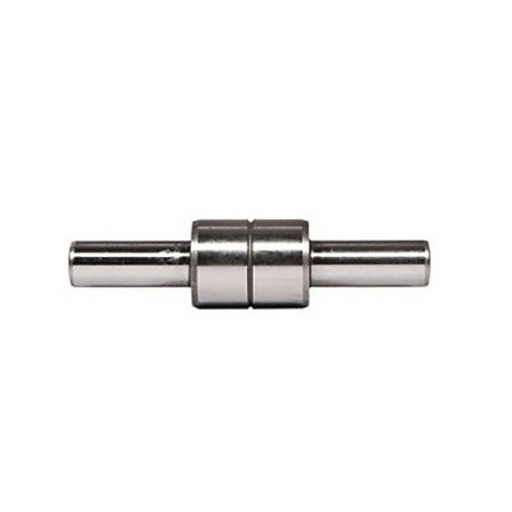
Tools and materials needed for the job
Below are the tools and materials needed for the efficient replacement of the shaft bearing of a water pump:
- Bearing puller: Specifically designed to extract a damaged bearing from the shaft without incurring any harm to the shaft itself.
- Press, hydraulic or mechanical: Aids in the placement of the bearing within the shaft to guarantee a remarkable grip.
- Caliper or micrometer: Shaft and bearing measurements are crucial to most accurately align with the tolerance of ±0.01 mm.
- Torque wrench: Guarantees that any fastening done is within the values of the manufacturer’s chosen torque – this discourages both the loosening and over-tightening of fasteners.
- Snap ring pliers: Designed for either the extraction or the application of snap rings, if they exist.
- Industrial-grade grease: Used for the lubrication of the internal components of machinery. It aims to reduce the friction encountered by the moving parts.
- Protective gloves and safety glasses: Helps guard against injury during this process.
By utilizing these tools and materials, the replacement process can be conducted efficiently, ensuring the water pump’s mechanical integrity and performance.
Tips for ensuring proper installation
When installing a pump shaft bearing, there are a few things that I try to do, and these are:
- Examine all fittings in detail: In this instance, pitting or wear to the shaft, housing, and indeed the new bearing will prove very harmful to the installation or performance functionality.
- Observe cleanliness: I make it a priority to clean all components, as even minor debris can cause misalignments or premature wear.
- Maintain proper bearing fit: The bearing will always follow those specified tolerances by the manufacturer of the shaft and housing. In this context, I check to see that the shaft diameter and the housing bore meet specification limits (ISO or ABEC).
- Lubricate properly: I use the lubricant specified in the pump manual, ensuring the correct viscosity and grade are applied uniformly, typically as per operational temperatures and speeds.
- Properly Align: Immediately after installing the shaft and bearing align and look for issues with seam and bearing stresses.
- Torquing: In some instances bolts and retaining rings have to be kept to the manufacturer’s recommended values so that they do not get loose when the bearing is operational.
- Temperature Considerations: Where necessary, I use the correct thermal methods, for instance, I place the bearing into a temperature-controlled room at 80-100°C (176-212°F) as this makes installation easier.
By following these steps systematically and consulting technical specifications provided by manufacturers, I ensure the correct and efficient installation of water pump shaft bearings. This minimizes the risk of issues arising during operation and extends the life of the equipment.
What are the consequences of ignoring a faulty water pump bearing?
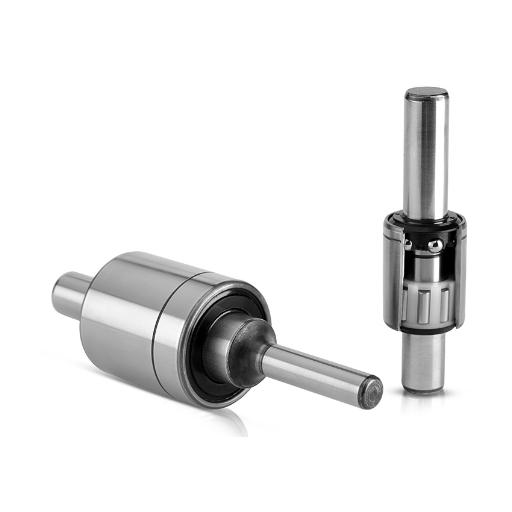
Potential engine overheating and damage
Inattention to a damaged water pump bearing can cause the water pump to fail, and also reduce coolant flow through the engine, which can be catastrophic. The lack of coolant circulation can lead to improper heat removal and subsequently to high engine temperatures. Such constraints on the engine over time can warp or crack major components like the cylinder head, block, or gasket due to thermal stress.
- Normal Operating Temperature: An average engine generates power efficiently with the intake water temperature between 195 to 220 degrees Fahrenheit (90 – 105 Celsius). If this temperature is surpassed, overheating indicators may show.
- Water Pump Bearing Tolerances: Commonly, a water pump bearing is manufactured with certain radial clearances (for instance 0.0002 to 0.001 inches). Such tolerances are normal but when a water pump bearing is overly damaged, control of alignment and vibration increases.
- Coolant Flow Rates: Generally a water pump should pump 20 -40 gallons per minute, depending on the size and speed of the engine. If the pump is not functioning properly, it may not pump as required. Reduced flow caused by a damaged bearing negatively impacts coolant circulation, resulting in poor cooling.
Addressing bearing faults promptly ensures the engine remains within its designed thermal parameters, preventing cascading damage and preserving overall system integrity.
Impact on other drivetrain components
A malfunctioning water pump can have a cascading impact on the performance and longevity of other drivetrain components. A failing water pump bearing often leads to misalignment and vibration, which can transfer excess mechanical stress to the timing belt or timing chain. This stress increases the risk of premature wear or outright failure of these critical components. Excessive vibration caused by a damaged pump can push these components beyond their designed tolerances.
In addition, the broken bearings result in reduced coolant flow rates, which reduces the cooling efficiency and leads to overheating. Increased thermal exposure during the operation of certain drivetrain components such as the cylinder head and gaskets will result in them being warped or cracked. The warping of the cylinder head starts above 230 degrees Fahrenheit (110 degrees Celsius) and the materials used to create the gaskets will fail at such high temperatures or even at lower ones due to prolonged thermal stress.
Therefore, maintaining the water pump within its operational tolerances is essential not only for its direct functionality but also to safeguard the integrity of other interconnected drivetrain components.
Frequently Asked Questions (FAQs)
Q: What are common signs of a bad water pump bearing?
A: Common signs include unusual noises (whining, grinding, or squealing), coolant leaks, engine overheating, and visible play or wobble in the water pump pulley. These symptoms could potentially cause the engine to overheat if left unaddressed.
Q: How can I check if my water pump bearings are worn?
A: One way to check is by removing the drive belt and manually rotating the water pump pulley. If you feel resistance, hear grinding, or notice excessive play, the bearings may be worn. Also, check for coolant leaks around the weep hole or pump housing.
Q: Can a failing water pump bearing damage other engine components?
A: Yes, a failing bearing could damage other components. It may cause the timing belt to slip or break if the water pump is driven by it. This could potentially damage the valves and camshaft, or even lead to a blown head gasket.
Q: How often should water pump bearings be replaced?
A: Water pump bearings are typically replaced along with the entire water pump unit. Many manufacturers recommend replacement every 60,000 to 100,000 miles, but this can vary. It’s often replaced with the timing belt in vehicles where the belt runs the water pump.
Q: Are aftermarket water pumps with bearings as durable as OEM parts?
A: The durability of aftermarket water pumps can vary. While some aftermarket parts match or exceed OEM quality, others may not be as durable. Research the company’s reputation and check customer reviews before purchasing an aftermarket water pump.
Q: How do I know if I need to replace the water pump or just the bearings?
A: In most cases, it’s recommended to replace the entire water pump unit rather than just the bearings. This ensures proper fit and function. If you’re unsure, consult with a professional mechanic for an accurate diagnosis.
Q: Can a faulty water pump bearing cause the radiator fan to malfunction?
A: While a faulty water pump bearing doesn’t directly affect the radiator fan, it can indirectly cause issues. If the bearing failure leads to overheating, it may cause the fan to run constantly. In some vehicles, a seized water pump could potentially damage the fan if they share a common drive belt.
Q: How much does it typically cost to repair water pump bearing issues?
A: The cost to repair water pump bearing issues varies depending on the vehicle’s make and model. Generally, replacing the entire water pump unit can range from $300 to $750, including parts and labor. Some high-end vehicles may cost more. Customers are advised to get quotes from multiple reputable repair shops.

